Synthwave music is a mesmerizing blend of 1980s nostalgia and contemporary electronic sounds.
It creates an immersive auditory experience that transports listeners to a neon-lit, retro-futuristic world.
The melody and atmosphere rely heavily on compelling and captivating chord progressions in this genre.
That’s why, as a music producer, knowing how to create synthwave chord progressions is crucial.
It can unlock the door to producing tracks that resonate deeply with fans of this genre and help you create nostalgically retro and refreshingly modern soundscapes.
In today’s article, we’ll be breaking down:
- What synthwave music is ✓
- The importance of chord progressions in synthwave music ✓
- The building blocks of synthwave music ✓
- How to create a synthwave chord progression like a pro ✓
- The role of bass notes and chord inversions ✓
- The 5 most popular synthwave chord progressions ✓
- Suspended chords, melodies, and arpeggios ✓
- Advanced synthwave production tips ✓
- Creating unique sounds with synths and samples ✓
- Utilizing your piano roll creatively ✓
- Much more ✓
You’ll be equipped with the knowledge to understand the intricate details of synthwave chord progressions and create them effortlessly.
You’ll gain insights into crafting tracks that resonate with the synthwave sound and learn how to infuse your music with the unique elements of the genre.
This way, you can create synthwave songs that captivate and stand out.
So, let’s dive in…
Table of Contents
- What Exactly is Synthwave Music?
- The Importance of Chord Progressions in Synthwave
- Building Blocks of Synthwave Music
- The 5 Most Popular Synthwave Chord Progressions
- Techniques for Crafting Synthwave Progressions
- Advanced Synthwave Production Tips
- Bonus: Creating Synthwave Tracks Step-by-Step (Verses, Choruses, and Bridges)
- Synthwave Chord Progressions: Final Thoughts
What Exactly is Synthwave Music?
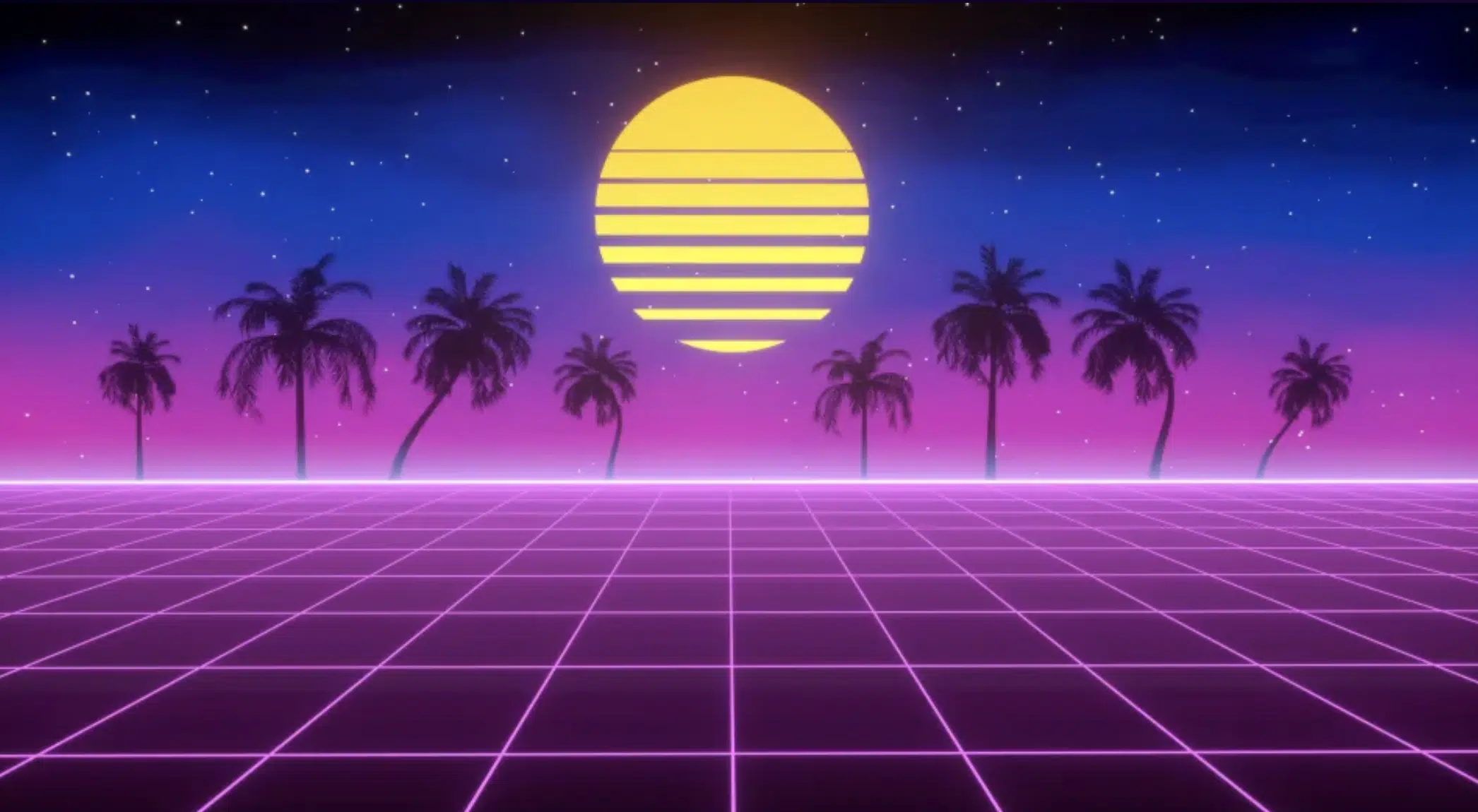
Synthwave music, a genre that emerged in the early 2000s, goes back to the soundscapes of the 1980s.
It blends the retro electronic feel with modern music production techniques.
As a music producer, Synthwave’s unique blend of old and new is challenging and exhilarating.
Syntheave echos the cinematic and video game scores of the 80s, characterized by its heavy use of:
- Synthesizers
- Drum machines
- Digital audio production
The genre often incorporates futuristic themes in its sound and visual aesthetics, making it instantly recognizable.
Synthwave’s resurgence in popularity is partly due to its exposure in modern media 一 resonating with older audiences and new generations of listeners alike.
NOTE: Synthwave spans various sub-genres, including darker, more moody sounds of dark synth and chillwave’s dreamier, lighter vibes.
Each sub-genre has its unique appeal, but they all share the quintessential synthwave elements: nostalgic synths, atmospheric pads, and rhythmic basslines.
The Importance of Chord Progressions in Synthwave
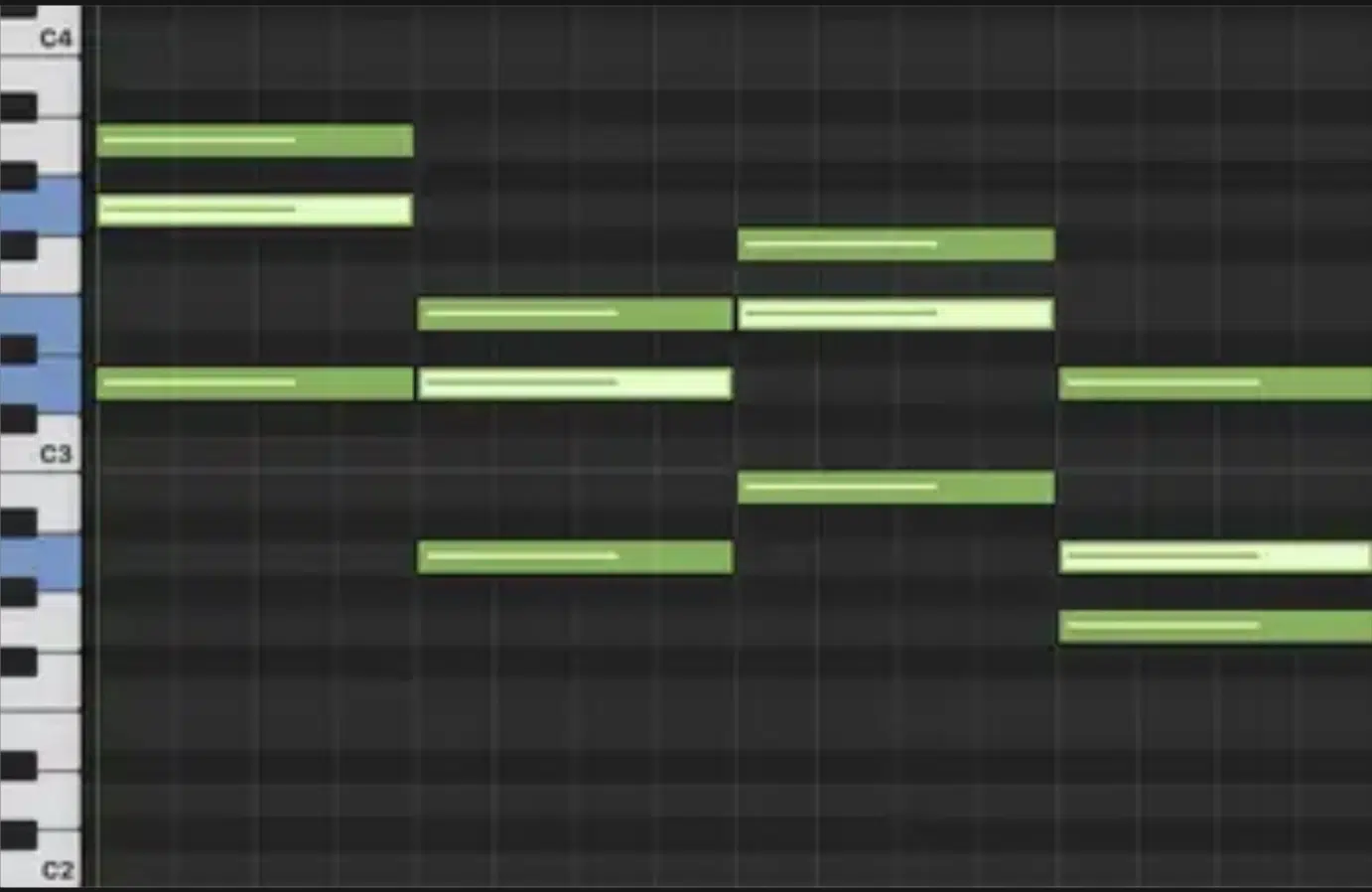
In synthwave music, chord progressions are the backbone of the track.
They set the mood, dictate the atmosphere, and guide the listener through the sonic journey.
Understanding and mastering chord progressions are crucial in creating compelling synthwave music.
Synthwave chord progressions often lean towards simplicity but with a twist of creativity and uniqueness. They can range from repetitive and hypnotic to complex and emotionally evocative.
The key is to balance familiarity with innovation 一 creating synthwave chord progressions that feel both new and nostalgically familiar.
The right chord progression can turn a simple melody into a memorable synthwave track.
It’s not just about the synthwave chords themselves, but:
- How they’re played
- The synths used
- The overall arrangement
The magic lies in transforming basic progressions into something uniquely synthwave, with its signature futuristic yet retro vibe.
Mastering these intricacies is key to creating synthwave chord progressions that will keep your audience hooked.
Building Blocks of Synthwave Music
To dive deeper into the essence of synthwave, let’s explore its fundamental components. We’ll start with the scales that form the basis of its melodies and harmonies.
-
The Major Scale
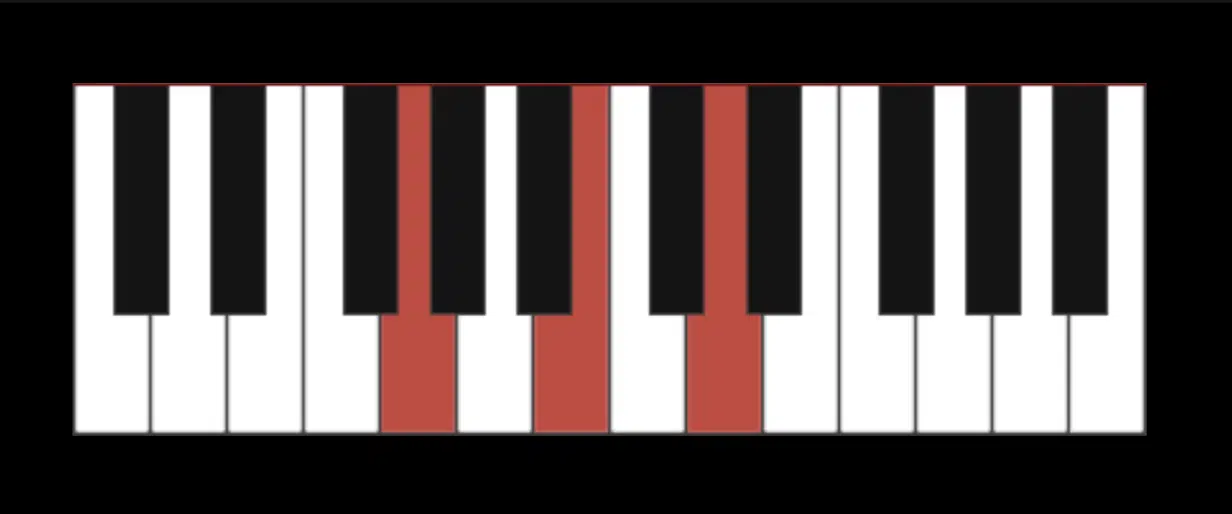
The major scale is often the starting point for many synthwave chord progressions.
It’s bright and uplifting and lends itself well to the optimistic tone of many synthwave songs.
In synthwave, the major scale can evoke feelings of:
- Euphoria
- Adventure
- Elation
This is reminiscent of 80s pop culture, where it originated.
When creating synthwave music, always experiment with the major scale to craft melodies and chord progressions that resonate with the genre’s upbeat nature.
It’s about finding the right balance between the scale’s inherent brightness and the mood you want to convey in the track.
A typical approach in synthwave is to use the major scale in novel ways 一 combining it with synth sounds and production techniques that add a modern twist.
This fusion is what makes synthwave so unique and appealing.
-
The Minor Scale/Minor Keys

Conversely, the minor scale plays an equally important role in synthwave music.
It’s all about creating a sense of:
- Nostalgia
- Melancholy
- Mystery
The minor scale’s inherently moody and emotional qualities perfectly complement Synthwave’s retro-futuristic aesthetic.
Using minor keys in synthwave allows for a deeper exploration of emotions, making a synthwave track stand out.
Minor keys are especially prevalent in darker synthwave sub-genres, contributing to a more intense, sometimes brooding atmosphere.
Remember, the most popular keys can always evoke strong emotions.
Crafting synthwave chord progressions in minor keys involves a delicate balance.
It’s about evoking emotions without overwhelming the listener 一 maintaining that signature synthwave feel while delving into more somber tones.
-
The Role of Bass Notes in Synthwave Music

Bass notes in synthwave are more than just the foundation of a track; they’re an essential part of its identity.
The bass in synthwave often carries the melody, driving the track forward and providing a solid foundation for the other musical elements.
The right bass note can make a chord progression come alive.
In synthwave, the bass note often plays a rhythmic role 一 interplaying with the drums to create a compelling groove reminiscent of the 80s dance floors.
When creating basslines, focus on how they interact with the chord progressions to ensure they complement each other and create a cohesive sound.
The bass note should not only support the chord progression but also add its character to the track.
This can be achieved through the:
- Choice of synth sounds
- Use of effects like reverb and delay
- Playing style
Whether smooth and flowing or more staccato and punchy, it’s all about the elements you incorporate.
-
Chord Inversions: Creating That Signature Synthwave Sound
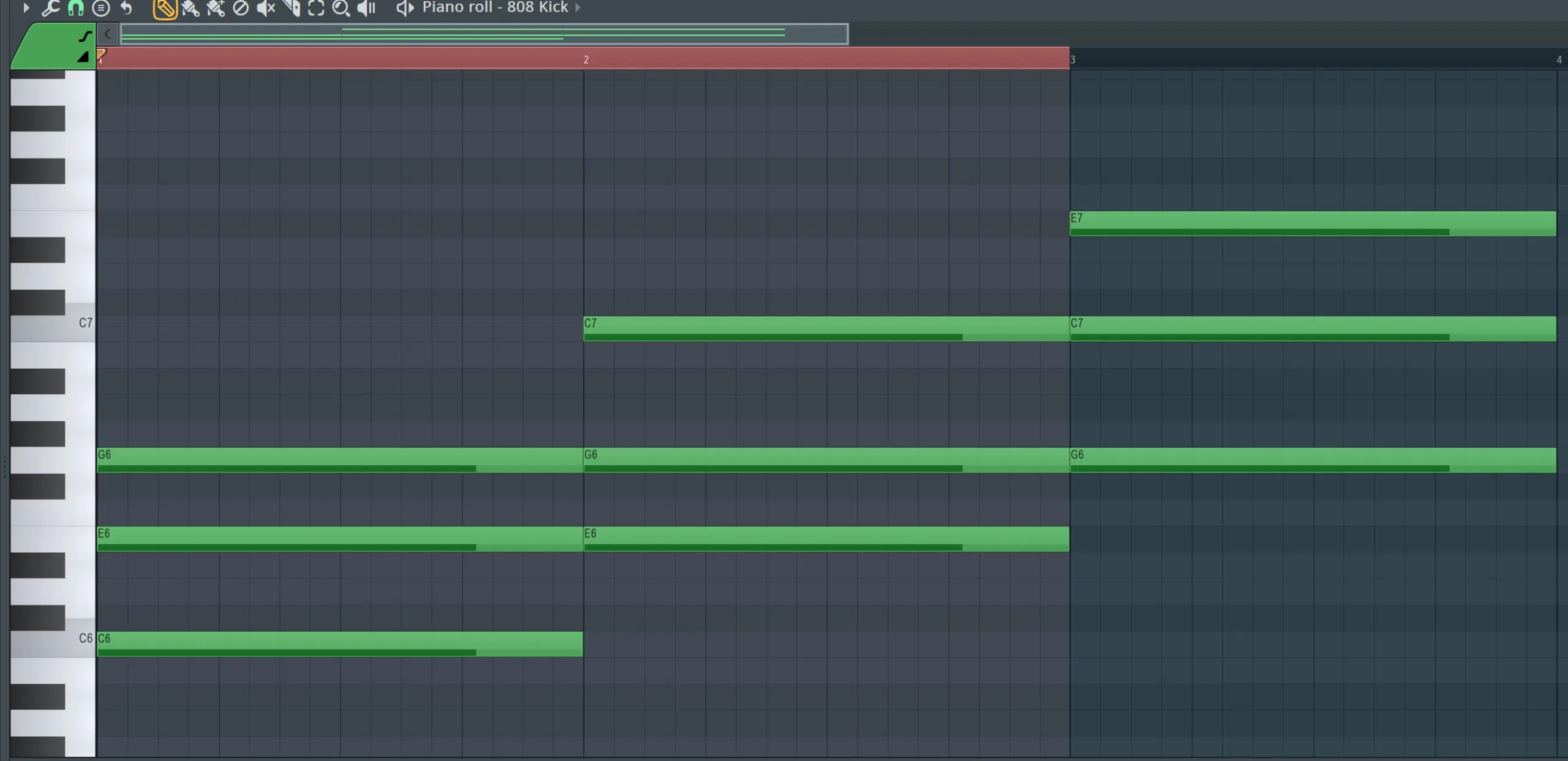
Chord inversions are a pivotal technique in shaping the signature sound of synthwave music.
By rearranging the random notes in a chord, inversions add a new dimension to familiar progressions.
This approach is key to achieving the distinctively lush and layered sound, a hallmark of the synthwave genre.
In synthwave chord progressions, utilizing inversions can transform a simple sequence into something much more sonically exciting and emotionally resonant.
Using chord inversions in synthwave is not just about altering the harmonic content; it’s also about texture and atmosphere.
Chord inversions can provide a sense of depth and space.
These elements are essential in creating expansive soundscapes synonymous with synthwave.
They allow for more creative basslines and melodies, as the altered note positions can lead to unexpected and engaging sonic pathways.
Implementing chord inversions effectively requires a solid understanding of music theory and a keen ear for harmonic balance.
But don’t worry; you don’t need to know advanced music theory, just the basics.
In synthwave tracks, they often play a crucial role during transitions between verses, choruses, and bridges 一 adding a dynamic quality to the arrangement.
Properly executed chord inversions can elevate a synthwave song from a simple retro imitation to a sophisticated and captivating piece of music.
The 5 Most Popular Synthwave Chord Progressions
Synthwave’s charm often lies in its chord progressions, which are the musical equivalent of a time machine. Let’s explore five iconic synthwave chord progressions that have a unique character and can help you create killer synthwave songs.
#1. The ‘Dreamy Dystopia’ Progression
The ‘Dreamy Dystopia’ progression (i-III-VI-VII) is a staple in modern synthwave tracks.
It creates a moody, introspective atmosphere, blending minor and major chords in a way that evokes a sense of nostalgia and longing.
This synthwave chord progression:
- Starts with a minor chord (i) 一 Offering a melancholic feel.
- Shifts to brighter major chords 一 Injecting a sense of hope and resolution.
Examples of this synthwave chord progression in a contemporary context are “Lovers” by Timecop1983 and the like.
The song skillfully uses the ‘Dreamy Dystopia’ progression to craft a reflective and expressive soundscape.
It beautifully embodies the synthwave chord progressions’ power to evoke complex emotions.
#2. The ‘Neon Nights’ Chord Sequence
The ‘Neon Nights’ chord sequence (I-V-vi-IV) is recognized for its upbeat and infectious energy, a favorite among synthwave artists for its ability to create an optimistic and vibrant mood.
This synthwave chord progression is a classic in the genre.
It perfectly balances familiarity and excitement that sounds good to most ears.
A modern synthwave song utilizing this synthwave chord progression is “Blinding Lights” by The Weeknd.
This track encapsulates the upbeat and vibrant energy characteristic of the progression of Neon Nights.
The song’s infectious rhythm and memorable melody perfectly exemplify how this chord sequence can create a hit that resonates with a broad audience while maintaining the core elements of the synthwave sound.
#3. The ‘Retro Futuristic’ Harmony
‘Retro Futuristic’ harmony (vi-IV-I-V) is known for its emotional depth and nostalgic touch.
This synthwave chord progression typically:
- Starts with a minor chord (the root note) 一 Adding a touch of introspection.
- Moves into major chords 一 Providing comfort and familiarity.
It’s the hallmark of many memorable synthwave songs.
“Shadows” by The Midnight is a prime example of retro-futuristic harmony in action.
The song’s use of this chord progression creates a balance between reflective and hopeful tones 一 capturing the essence of the synthwave sound.
#4. ‘Synthwave Sunset’ Chords
The ‘Synthwave Sunset’ synthwave chords (ii-IV-I-V) offer a warm, comforting feel, perfect for capturing the serene beauty often associated with synthwave visuals.
This synthwave chord progression starts with a minor chord, creating a mellow tone, then transitions into major chords, evoking feelings of peace and resolution.
“Save Your Tears” by The Weeknd is an excellent example of this synthwave chord progression.
This track uses the progression to create a soothing yet engaging soundscape, embodying the tranquil and reflective qualities of the ‘Synthwave Sunset’ chords.
The combination of warm harmonies and the song’s smooth rhythm aligns perfectly with the serene and passionate atmosphere this chord progression is known for in the synthwave genre.
#5. ‘Electric Dreams’ Progression
The ‘Electric Dreams’ progression (I-vi-ii-V) is famous for synthwave artists aiming to craft an upbeat and catchy melody.
This synthwave chord progression is characterized by its bright and pop-oriented vibe, starting with a major chord and weaving through minor and major turns.
This offers a journey through different emotional landscapes.
A recent hit that utilizes this synthwave chord progression is “On the Run” by Wolf and Raven.
This track exemplifies how the ‘Electric Dreams’ progression can be used to create a lively and nostalgically alluring track.
It perfectly captures the essence of modern synthwave music.
Techniques for Crafting Synthwave Progressions
Having explored some popular chord progressions, let’s delve into techniques for crafting your synthwave progressions. These tips and tricks help infuse your tracks with the distinctive synthwave essence.
-
Utilizing Suspended Chords
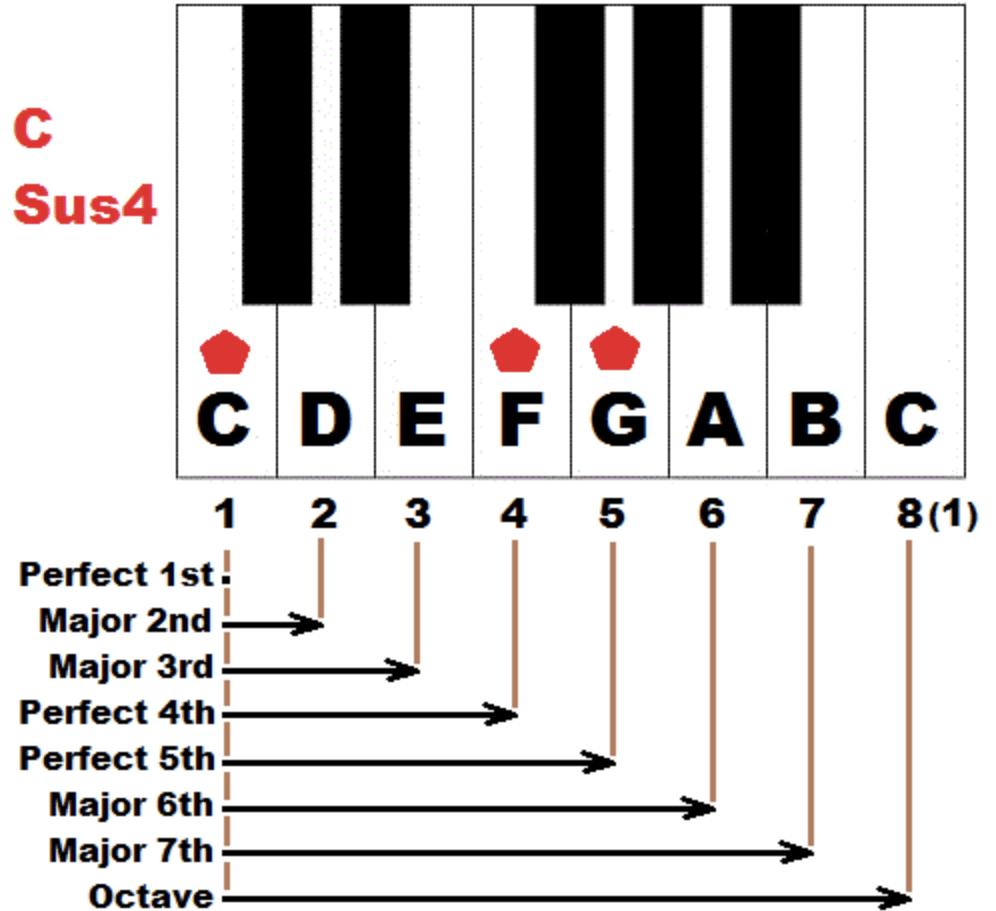
Suspended chords are fundamental in crafting the dreamlike and ethereal soundscapes characteristic of synthwave music.
By temporarily suspending a chord’s third and replacing it with either a second or a fourth, these chords introduce a sense of tension and release.
This is vital for adding emotional depth to synthwave chord progressions.
In synthwave songs, suspended chords often precede a resolution back to the major or minor chord, creating a dynamic musical narrative.
NOTE: This sus chord technique is particularly effective in evoking a sense of anticipation and suspense, integral to the synthwave vibe.
Using suspended chords can significantly influence a track’s overall mood and texture 一 making them an essential element in the synthwave producer’s toolkit.
Mastery of suspended chords involves understanding their theoretical basis and an intuitive sense of their practical application in synthwave music.
Skillful use of all the chords can transform a straightforward progression into a captivating and immersive sonic experience.
-
Exploring Synthwave Melodies and Arpeggios
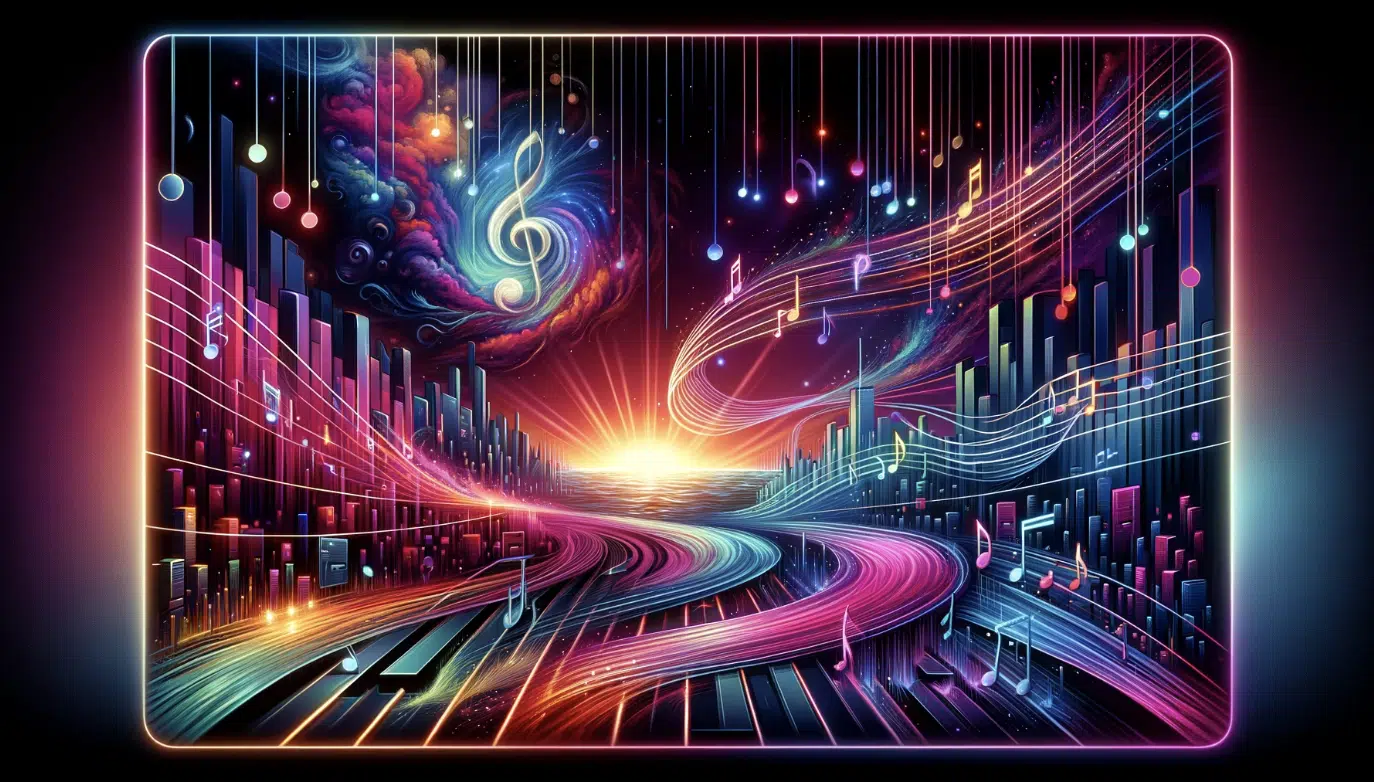
Melodies and arpeggios are central to defining the emotive and nostalgic quality of synthwave music.
Crafting memorable melodies that resonate with the genre’s retro-futuristic theme involves a careful blend of:
- Rhythm
- Note selection
- Tonality
Arpeggios (created by playing the notes of a chord in succession rather than simultaneously) are particularly effective in synthwave for adding rhythmic and melodic complexity.
They can enhance the atmosphere of a track 一 providing movement and texture integral to the synthwave sound.
Creating synthwave melodies and arpeggios requires a balance between simplicity and sophistication.
While the melodies should be catchy and evocative, the arpeggios can add layers of subtlety and depth.
This contributes to the rich tapestry of sounds that define synthwave music and synthwave chord progressions.
Advanced Synthwave Production Tips
As you delve deeper into synthwave production, there are advanced techniques that can elevate your music. Let’s explore some of these tips, focusing on mixing, reverb, and sound design.
-
Enhancing Your Mix with Reverb For That Synthwave Sound
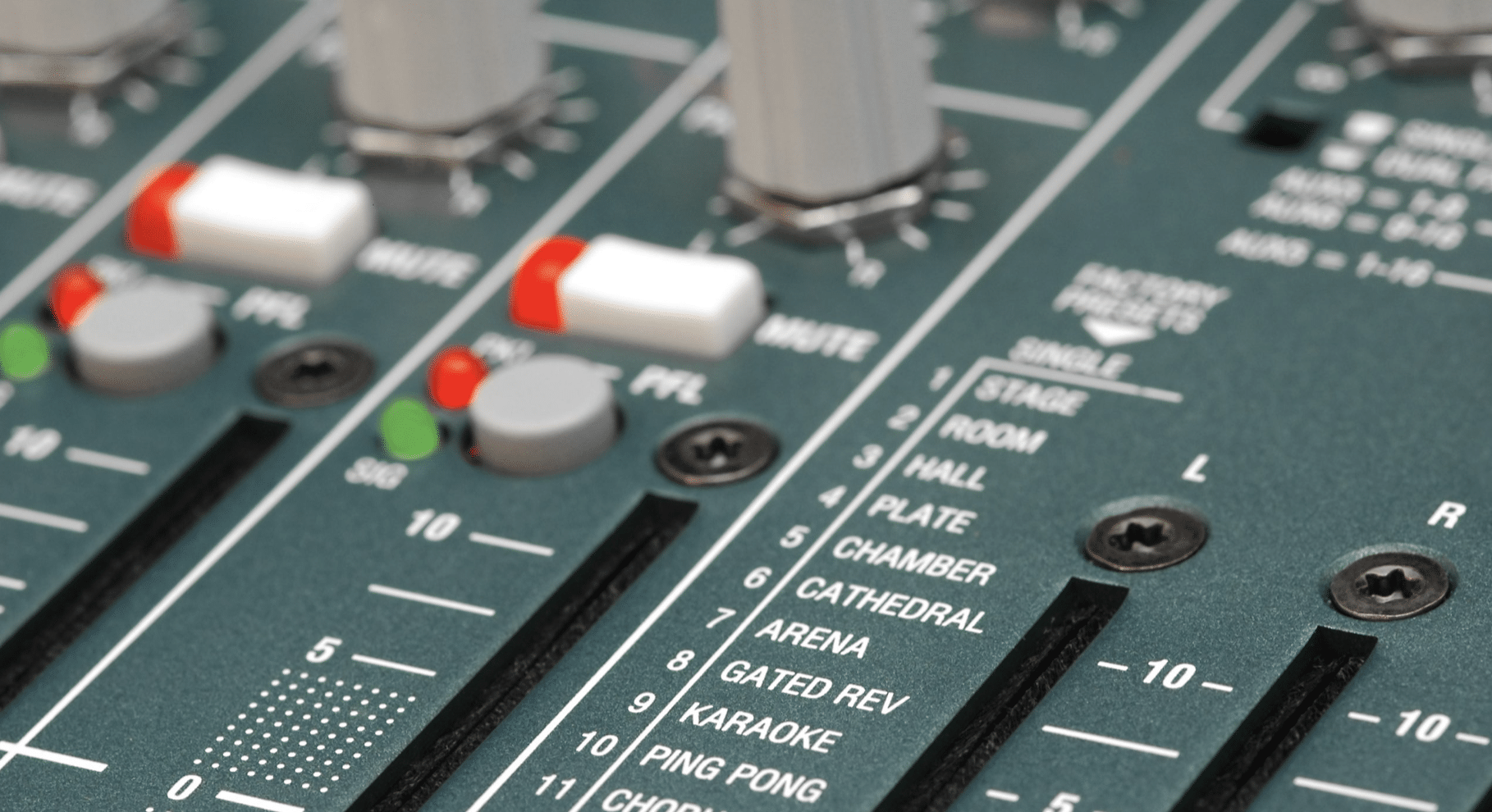
Reverb is a crucial element in synthwave production, used to create the expansive and atmospheric sound for which the genre is known.
It adds depth and space to the mix, allowing individual elements to shine, like:
- Synth leads
- Basslines
- Drums
The application of reverb in synthwave music should be strategic and thoughtful to ensure your song sounds good.
Choosing the right type and amount of reverb is essential to avoid a muddy mix while still achieving the desired spacious effect.
The choice significantly impacts the track’s overall sound, whether it’s a lush hall reverb for a grand, cinematic feel or a tighter room reverb for a more intimate vibe.
The use of reverb in synthwave is not just about adding ambience; it’s also about evoking emotion and nostalgia.
When mixed correctly, reverb can give a track that signature synthwave character 一 a sound that’s both timeless and evocative of the genre’s 80s roots.
-
Creating Unique Sounds with Synths and Samples
Synths and samples are at the heart of synthwave music production.
Crafting unique sounds involves technical skills and a creative approach to sound design.
The choice and manipulation of synths and samples play a pivotal role in defining a track’s character and setting it apart in the genre.
Synths
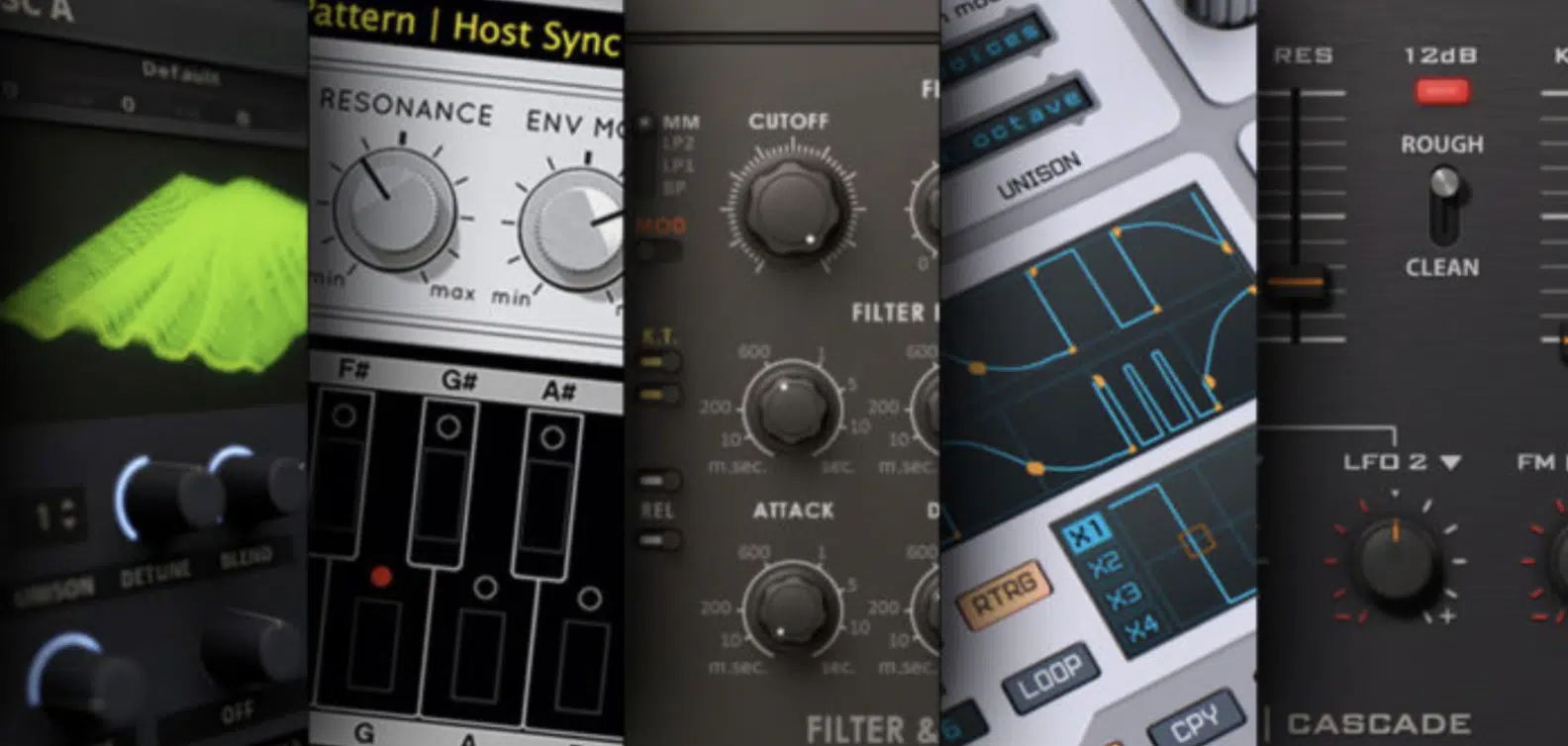
Synthesizers in synthwave are used to create everything from pulsating basslines to soaring leads and atmospheric pads.
Experimenting with various synth parameters like oscillators, filters, and envelopes allows you to sculpt distinctive sounds that capture the essence of synthwave.
Samples
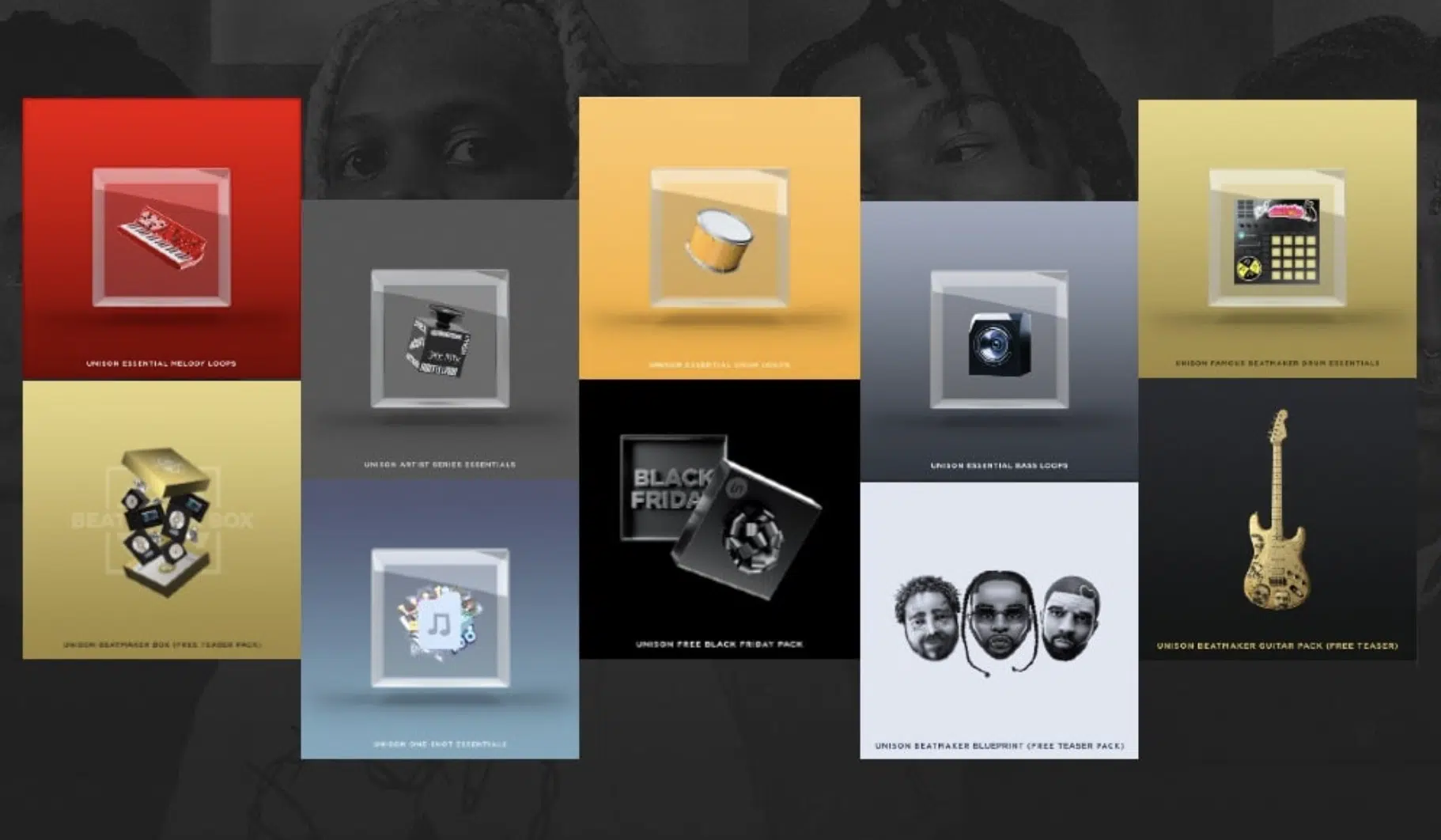
Samples can add texture and complexity to a synthwave track.
Whether incorporating vintage drum machine sounds or layering unique audio samples, their thoughtful integration can enhance the track’s retro-futuristic feel.
The effective use of synths and samples is vital to producing music authentic to the synthwave genre and fresh and original.
Bonus: Creating Synthwave Tracks Step-by-Step (Verses, Choruses, and Bridges)
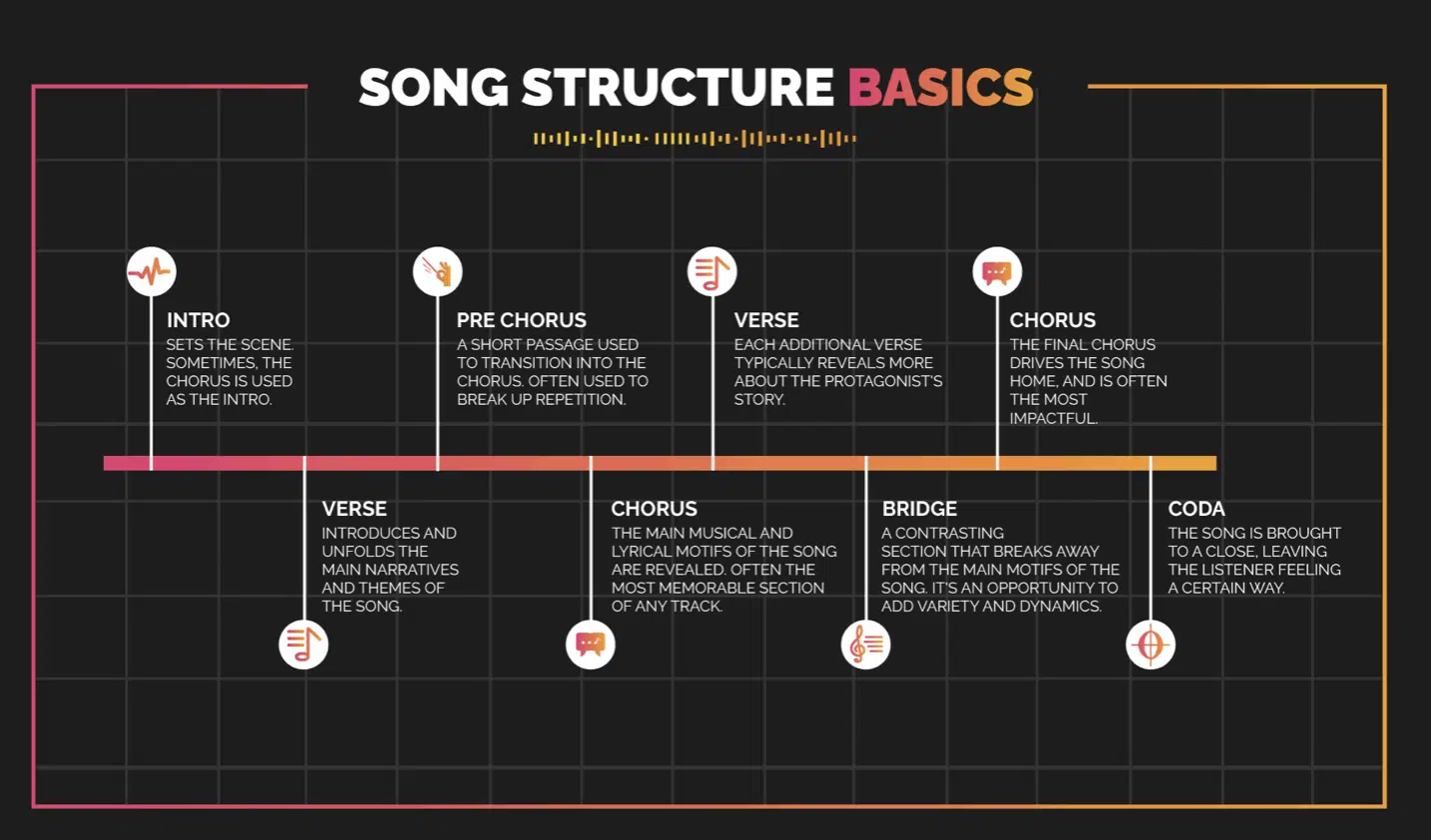
When creating a synthwave track, understanding the structure of verses, choruses, and bridges is crucial.
Each element plays a specific role:
- The verses 一 Set the tone and introduce the story.
- The chorus (and pre-chorus) 一 Brings a catchy, memorable hook.
- The bridge 一 Offers a moment of departure, adding variety and depth.
In synthwave, these sections are often defined by their distinct chord progressions and synth-pop textures.
A verse, for example, might use a more subdued chord progression with softer synths.
This typically builds up to a chorus that features a more vibrant and robust chord sequence with powerful synth leads.
The chorus is the heart of a synthwave song, often featuring the most memorable melody and lyrics.
It’s where the track’s common theme is usually presented, often with a fuller sound and more pronounced rhythm.
The chorus is where you’d typically bring in your more striking synthwave chords and bass notes 一 creating a lead sound that resonates with the genre’s retro-futuristic vibe.
Bridges in synthwave serve as a crucial transition, providing contrast and keeping the listener engaged.
This section often features chord progressions, key, or even tempo shifts.
Bridges allow you to experiment with different elements, like introducing a unique synth sound or changing up the rhythm.
The bridge can either calm the track down before ramping back up to the final chorus or be a space to introduce a new motif or theme.
Synthwave Chord Progressions: Final Thoughts
Creating compelling synthwave chord progressions is both an art and a science, blending creativity with technical mastery.
Now, after exploring the depths of synthwave music production in this article, you’re equipped to craft synthwave tracks that resonate with the genre’s unique aesthetic.
As well as instantly captivate your audience, of course.
With these insights and techniques, you’ll be able to produce music that pays homage to the retro-futuristic vibes of the 80s and stands out in the modern music landscape.
To truly elevate your synthwave productions and streamline your creative process, this renowned Synthwave & Synth-Pop MIDI Chord Collection pack is an indispensable asset.
This expansive pack, including over 1,800 drag-and-drop MIDI files, is tailor-made to enhance your ability to create professional-level synthwave and synth-pop chords and progressions.
It provides a wealth of inspiration right at your fingertips.
This professional synthwave pack is an invaluable tool for finding instant inspiration and elevating the quality of your music, significantly boosting your chances of crafting a hit song.
So, use the knowledge in this article and this unparalleled pack to create legendary synthwave tracks.
Until next time…







Leave a Reply
You must belogged in to post a comment.